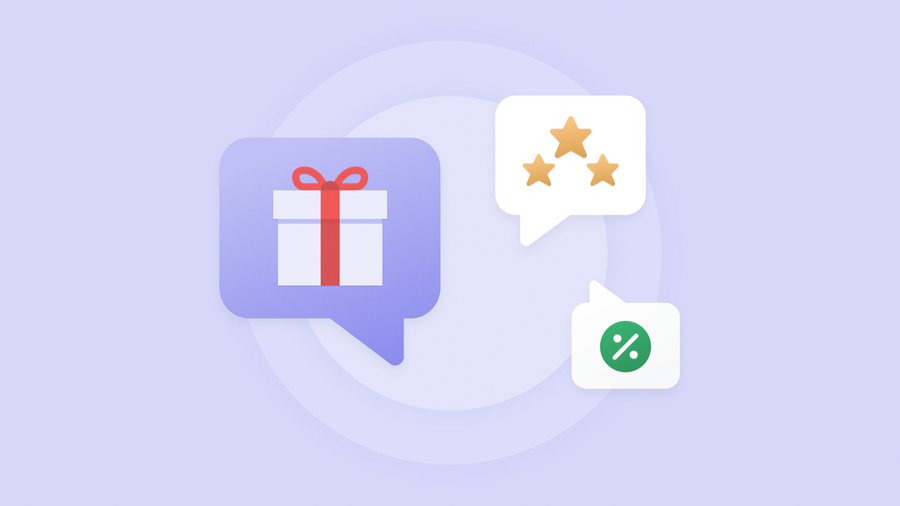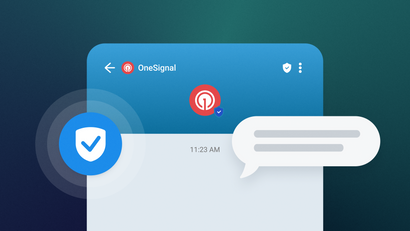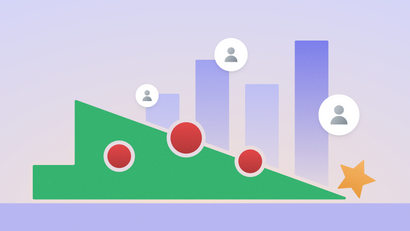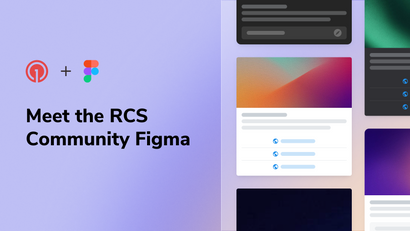User loyalty isn't something that happens overnight or even over a month. It's earned through a continuous effort of personalized experiences, consistent value, and responsive support. Today, users have countless options at their fingertips, so they won't hesitate to switch to a competitor if their expectations aren't met.
Essentially, building loyalty hinges on showing users that you value their time and that you're dedicated to creating an experience that is personally unique to them. An omnichannel approach enhances this loyalty even further by providing a seamless experience across every touchpoint, giving users frequent, but intuitive opportunities to engage with your brand.
Loyal users are more likely to engage with your app routinely, make in-app purchases, and refer new users, increasing lifetime value and reducing churn rates. Focus on these seven strategies to go beyond weekly engagement and solidify a lasting relationship with your users.
1. Prove Your Value Early Through Personalized Onboarding
Mobile app onboarding sets the tone for the entire user experience. When people first download an app, they are often eager but cautious, looking to quickly determine if the app will meet their needs and expectations. An engaging onboarding process can immediately capture their interest and demonstrate your app's value, encouraging users to explore further. On the other hand, a confusing or tedious onboarding experience all but guarantees abandonment.
Customizing the onboarding experience for new users builds a foundation for a meaningful relationship by making each user feel valued and understood. Unlike non-personalized apps, which offer a one-size-fits-all introduction, personalized onboarding tailors the experience to individual preferences. This approach can involve asking users about their goals or preferences at the outset and then adjusting your app's tutorial, features, and recommendations accordingly. For example, a fitness app might start by asking users about their fitness levels and goals, then customize the initial setup with tailored workout plans and tips.
Take a look at MyFitnessPal's onboarding sequence — it asks users about their goals and habits upfront, reinforcing the value of their app while collecting important preferences of new users.
Onboarding can also be a perfect opportunity to personalize the user experience in smaller, intuitive ways. For instance, the sports betting app Betmate tailors their onboarding flow based on how new users enter the app (based on a signup offer for instance) so that their onboarding Journey will be tailored to that experience.
Read Betmate’s full story to find out how they achieved a 600% increase in monthly active users (MAU) using OneSignal.
2. Keep Communication Regular, But Relevant
Consistent communication through push notifications and in-app messages is essential for fostering lasting user loyalty. But be warned, “consistent” doesn’t mean constant. Mobile marketers should focus on building a living, breathing ecosystem rather than sending a swarm of one-off generic messages. Personalized interactions keep users engaged and feeling valued without causing the message fatigue associated with spammy, untargeted notifications.
Regular updates and relevant content tailored to users' interests and behaviors demonstrate that your app understands and, better yet, anticipates their needs. This dynamic communication approach can include timely reminders, exclusive offers, or curated content that enhances the user experience. This ongoing dialogue leads to increased retention and long-term loyalty.
Consider segmenting your audience based on different, specific factors such as:
Demographics
- Age
- Gender
- Location
- Language
Behavior
- Purchase history
- Browsing history
- In-app behavior (e.g., features used, time spent)
- Engagement level (active vs. inactive users)
Psychographics
- Interests
- Lifestyle
- Values and beliefs
Lifecycle Stage
- New users
- Returning users
- Loyal customers
- At-risk users (those who haven't used your app recently)
Device Type
- Operating system (iOS vs. Android)
- Device model
Subscription Status
- Free users
- Paid subscribers
- Trial users
Interaction History
- Response to previous communications
- Customer support interactions
- Feedback provided
Spending Habits
- High spenders
- Low spenders
- Non-spenders
Referral Sources
- Users referred by friends
- Users from social media
- Users from advertising campaigns
3. Harness the Power of Positive Reinforcement
By rewarding users for specific actions, such as frequent usage, referrals, or in-app purchases, loyalty programs encourage consistent interaction and long-term commitment. This not only enhances user satisfaction but also drives higher retention rates and increases lifetime value.
Campaigns across multiple channels that offer personalized rewards and incentives can further boost retention rates by reaching users wherever they are most active and receptive. For example, our hypothetical fitness app may send a morning push notification at 7 AM to users with a personalized message encouraging them to start their day with a workout. Around noon, they send another push notification reminding users to log their meals or hydration.
Upon opening the app, an in-app message appears, with a personalized workout plan for the day. When users complete a workout or log their meals, an email is triggered, congratulating them and offering a reward.
By tailoring these rewards to individual user preferences and behaviors, you create a cohesive and engaging experience that keeps users returning to your app, ultimately strengthening their loyalty over time.
Seattle-based coffee payment platform, Joe, gives merchants the ability to set up online menus, web ordering, as well as automated loyalty and rewards programs for free
Read Joe’s full story for a look at how they leveraged advanced segmentation to boost their retention rate.
4. Don’t Shy Away From User Feedback
By actively soliciting feedback through surveys, in-app prompts, and social media interactions, you gain valuable insights into user preferences, pain points, and suggestions for new features. Acting on this feedback to make meaningful updates and improvements shows users that their voices are heard and that their satisfaction is a priority. This responsiveness fosters trust and a sense of community, making users feel more connected and loyal to your app as time goes on.
So what do you do once you have all that feedback?
- Categorize Feedback: Sort user feedback into specific categories, such as usability issues, feature requests, bugs, and general comments, to identify common themes and areas needing attention.
- Use Sentiment Analysis: Conduct a “sentiment analysis” to gauge the overall mood of user feedback, distinguishing between positive, negative, and neutral sentiments to prioritize actions.
- Track Key Metrics: Monitor key performance indicators (KPIs) like user satisfaction scores, net promoter scores (NPS), and churn rates to quantitatively measure the impact of feedback-driven changes.
- Identify Trends Over Time: Regularly review feedback trends to spot recurring issues or popular feature requests, enabling the team to focus on long-term improvements and strategic development.
- Conduct A/B Testing: Use A/B testing to evaluate the effectiveness of changes made in response to feedback, ensuring that updates positively impact user experience and engagement.
At the end of the day, your users want to feel heard, whether the feedback is good, bad, or ugly. When users see that their feedback leads to tangible improvements and solutions, they will feel encouraged to continue using your app, confident that their experience will keep evolving to meet their needs.
5. Embrace the Omnichannel Approach
When users receive cohesive and harmonious communication from an app, it reinforces the brand's identity and reliability. Consistency in messaging ensures that users are not confused or overwhelmed by conflicting information, making their interactions with the app seamless and enjoyable. By delivering a unified experience, you create an environment where users can smoothly transition between different channels without feeling disjointed or disconnected, building earned trust in your app.
Furthermore, an omnichannel approach allows for more personalized and contextually relevant interactions — two key pillars of user retention. For instance, a user might receive a push notification about a new feature, followed by an in-app message providing detailed instructions on how to use it, and then an email summarizing their recent activity and offering tips for better engagement. Thought the campaign is all for the same event (a new feature), the user experiences a dialogue that moves with them through at their exploratory pace.
OneSignal’s no-code Journeys builder allows you to orchestrate and automated mobile messaging across all channels based on real-time triggers. By mapping out custom, drag-and-drop flows and sequencing dedicated campaigns to specific audience segments, Journeys was designed for marketers who are actively trying to become independent from time consuming engineering resources.
The above example helps illustrate what the parking space finder app, YourParkingSpace, went through before settling on using Journeys. YourParkingSpace knew that catching new users within their first 30 days was critical, but to achieve success at scale, they needed a way to automate the process.
By automating targeted push, email, and IAM campaigns within OneSignal Journeys, YourParkingSpace discovered that a multi-touchpoint approach yielded extremely impactful results. By catching customers during the onboarding process with personalized offers, auxiliary add-on services, and automated follow-up reminders, their conversion rate increased by 700% and they saw a 25% increase in the average number of bookings per customer.
Read the full YourParkingSpace story to learn more about this stellar use case!
6. Always Enable Community
Creating in-app communities and social features, along with encouraging user-generated content and peer interaction, significantly contributes to lasting user loyalty and higher app retention. When users can engage with each other, share experiences, and contribute content, they become more invested in your app and its community.
This social interaction not only makes the app more enjoyable and engaging but also creates a network effect where the value of the app increases as more users participate. Additionally, seeing peers actively using and enjoying your app can motivate users to stay engaged and return regularly.
Consider sending a push notification inviting users to participate in a social media challenge or contest. Once users open your app, reinforce the campaign with an in-app message that provides more details and encourages participation. This message can include direct links to your social media pages and instructions on how to enter the challenge.
7. Make Users Feel Special With Exclusive Content
Offering exclusive content, features, or early access to select users nurtures loyalty and increases the chances of them returning to your app by making them feel valued and privileged. When people receive special benefits that are not available to everyone, it creates a sense of exclusivity and strengthens their relationship with your brand.
These unique offerings can cater to their specific interests and needs, providing users with added value and a compelling reason to stay engaged. Over time, users will begin to look forward to discovering and utilizing these exclusive benefits, ultimately driving higher retention.
Shake Shack used geolocation data to segment subscribers located in specific cities in order to send them regional campaigns. When users in the target area launched their app, they were immediately rewarded with an exclusive special Mardi Gras King Cake Concrete, available only at the New Orleans Shake Shack location. To tease and promote the offer, they sent a teaser push notification to users within a 15-mile radius of the location.
Ready to Get Started? User Loyalty Begins With Your Messaging Provider
One in every five mobile apps chooses OneSignal to handle their mobile messaging. From simple push campaigns to cross-channel re-engagement sequences, we take pride in making engagement a more intuitive process for marketers, while delivering the API and documentation that every developer needs. See what people have to say about us by checking out our reviews, or if you’re a little more “hands-on,” create a free OneSignal account to jump in.
Get Started for Free



